Dragonfire (Boardgame)
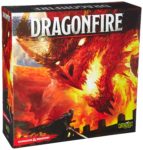 The popularity of role playing games has inspired many a designer to capture the multi part story and character progression of a RPG within a boardgame. Dragonfire picks up the theme and story of the current edition of Dungeons and Dragons, a places it into a cooperative, legacy-style deckbuilding card game. Does it work? Unsurprisingly, the game has a bit of a learning curve, but is my favorite game in the genre (legacy co-op card game) so far.
The popularity of role playing games has inspired many a designer to capture the multi part story and character progression of a RPG within a boardgame. Dragonfire picks up the theme and story of the current edition of Dungeons and Dragons, a places it into a cooperative, legacy-style deckbuilding card game. Does it work? Unsurprisingly, the game has a bit of a learning curve, but is my favorite game in the genre (legacy co-op card game) so far.
Dragonfire
Designers: Randall N. Bills, Loren L. Coleman
Publisher: Catalyst Game Labs
Players: 2-6
Ages: 13+
Time: 60-90 minutes
(review copy provided by publisher)
Dragonfire builds off the game system in Shadowrun: Crossfire game. Players pick a character and then play through a series of games, improving that character over time. The heart of the game revolves around a deckbuilding mechanic, where players start with a small deck of cards and then buy cards from a central tableau to be used in future turns.
A typical game of Dragonfire will have players fighting through three successively more difficult encounters to win the game. A story-driven narrative consists of several of these linked games. The story included in the base game is An Ancient Evil Arises, consisting of a half-dozen or so linked games. There are also options for one-and-done adventures, such as a dungeon crawl, which can be scaled to character levels. Other adventure narratives can be purchased separately, such as Shadows Over Dragonspear Castle. They include new monsters, treasures, and other game-related cards.
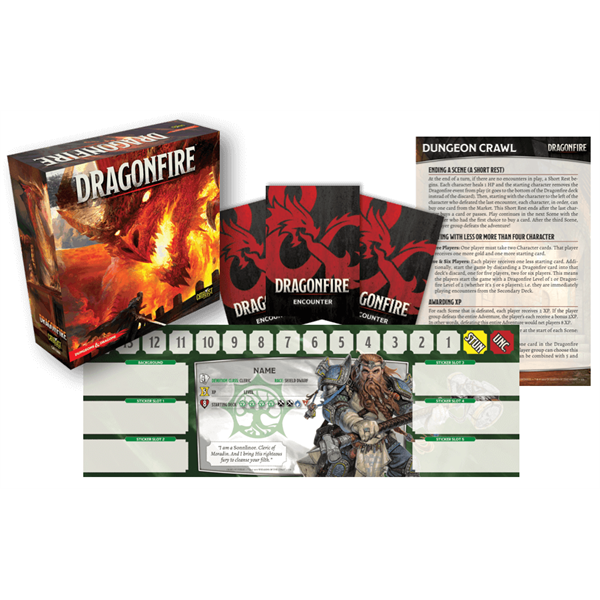
Players choose a character (consisting of a race and class) which dictates their starting deck, gold, health, and starting hand size. There are four main colors of character, linked to typical RPG class types: red (rogue), blue (wizard), green (cleric), and black (fighter). The base game has a number of these types, each with a different race. The Character Pack expansion adds in 32 new race/class combos including four new classes: Ranger, Druid, Warlock, and Bard.
The classes diverge a small bit at the start, but players are meant to reuse their characters in later games. They improve after each complete game, gaining experience points and magic items. As characters gain experience, it can be spent by purchasing upgrades which appear as new stickers placed on their character card. Upgrades include improvements to one’s starting deck, better starting statistics (health/money), and special powers available in the game. Characters can even purchase a subclass ability that unlocks additional options later in their career (such as the Eldritch Knight, which can use some blue/wizard abilities.)
A single game consists of a series of scenes (typically 3) where players encounter and try to defeat opponents by playing cards. To begin, encounter cards are drawn from a deck of cards and placed in front of each player. These usually must be defeated to complete the encounter (and then move on to the next one, where more encounter cards are drawn.) To start a round, a Dragonfire card is flipped over (and the previous card, if any, is discarded) and its effects are read. These can have positive or (more likely) negative effects that are in play for the round. Players then go around the table playing cards against their own, or other player’s encounter cards. At the end of a player’s turn, encounter cards left over in front of a player attack that player, doing damage. Play then continues to the next player in line until all players have had a turn. The top dragonfire card is discarded, a new one is drawn, and the next round begins. Once all the encounter cards have been defeated, players heal a little bit, the current Dragonfire card is put on the bottom of the deck, and can buy new cards in the marketplace. Then the next scene begins with a new Dragonfire card.
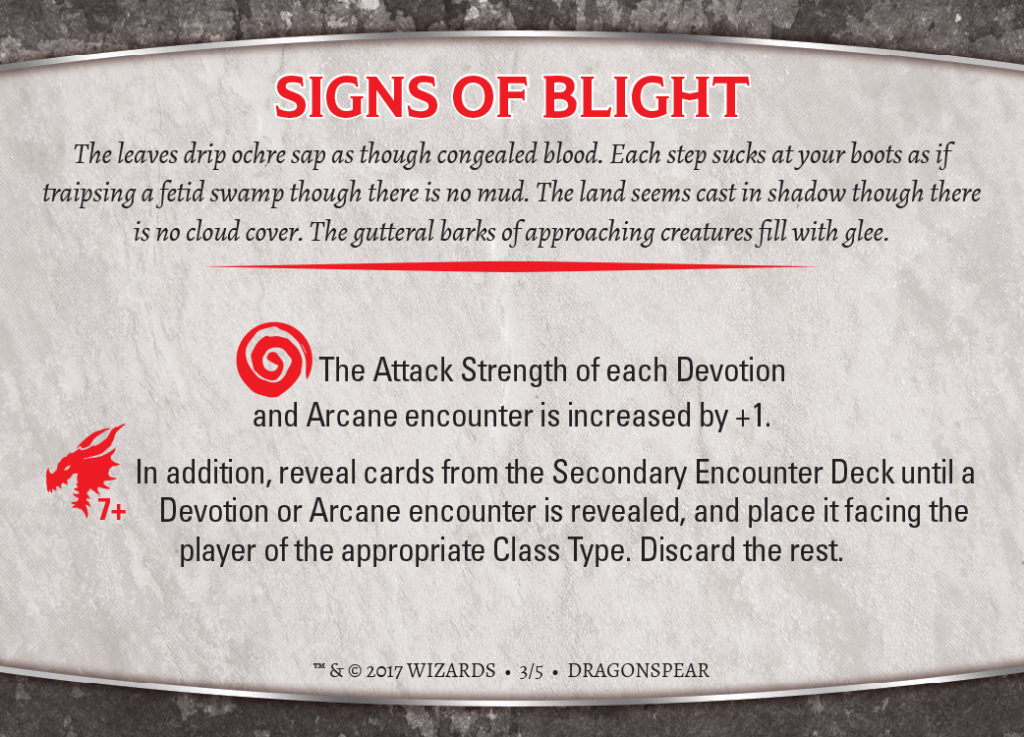
Each encounter card has a series of symbols on its right hand side. These symbols correspond to one of the four colors in the game (or are grey, meaning any symbol.) Players must match, in order – from top to bottom, the symbols on the side of the card to defeat it. The symbols can be cleared over the course of several turns, so progress is marked by a handy slider placed on the card (also used to track health.) Players can play on anyone’s encounter (except for a few rare cases where multiple players have a “location” encounter) during their turn. Players may use cards with an “Assist” feature on other players’ turns. Once all the symbols on a card have been marked off, the encounter is defeated and it grants gold to all players. Cool card features include the option of “skipping over” groups of symbols entirely, very useful for more powerful encounter cards that have greater symbol requirements.
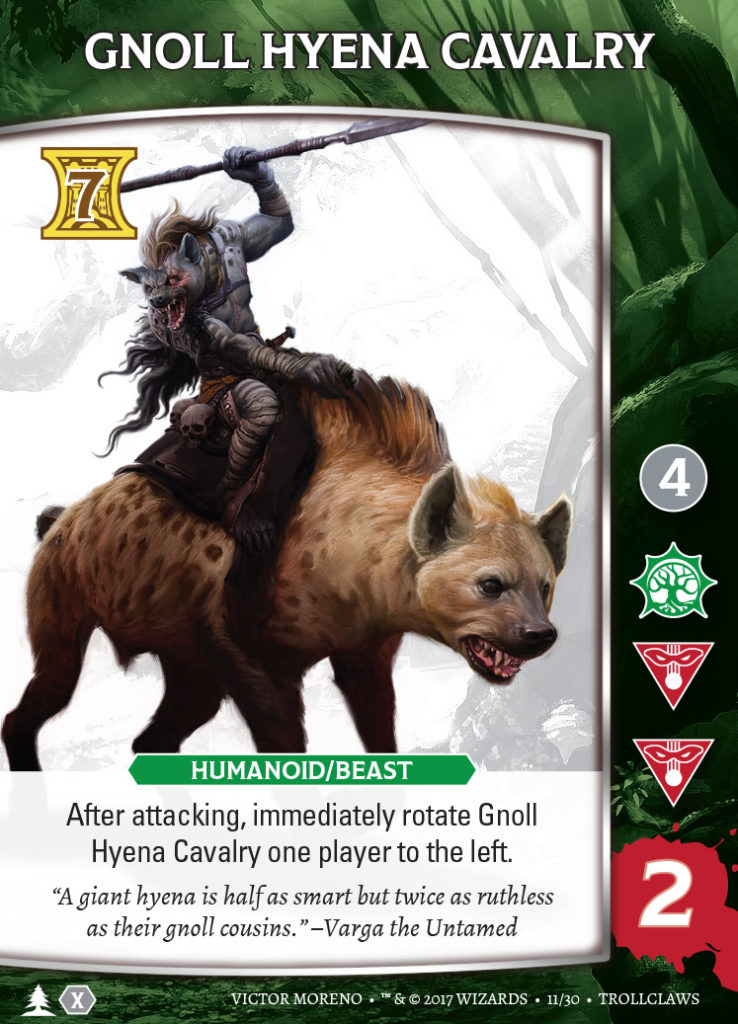
Gold is used to purchase new cards from a central tableau. This can be done at the end of any turn, and is extremely helpful because purchased cards go directly into one’s hand. Players only draw 2 cards at the end of their turn, so purchasing new cards is an important way to increase one’s available options for the next turn. If no card is purchased, a player swaps out one of the cards in the tableau, making the spot available for the next (and hopefully more useful) card.
As players defeat encounters and progress to new scenes, the Dragonfire cards serve as a means to up the difficulty as the game wears on. Most Dragonfire cards and some encounters key off the number of discarded Dragonfire cards, called the Dragonfire Level. The cards check to see if a specific number have been discarded. If so, nasty things happen. Some cards have levels of nastiness, getting worse when the Dragonfire level is higher. The Dragonfire cards have one more use. Each game consists of two piles of encounter cards. A (relatively) easy one, and a more difficult one. During setup for a scene, a number of cards equal to the Dragonfire Level are first pulled from the more difficult deck, and the rest of the encounter cards are pulled from the “easier” deck.
Characters reduced to 0 hit points (or less) become stunned and have very limited options for cards. Characters healed jump right back into the fight. Characters reduced to 0 HP a second time are out of the action for the rest of the scene. The game is set up to play with a full complement of 4 characters (at least one of each of the four colors.) Special rules are used to “make up” for missing colors when playing with fewer players, and they seem to do a decent job (most of my play was with 2 players.)
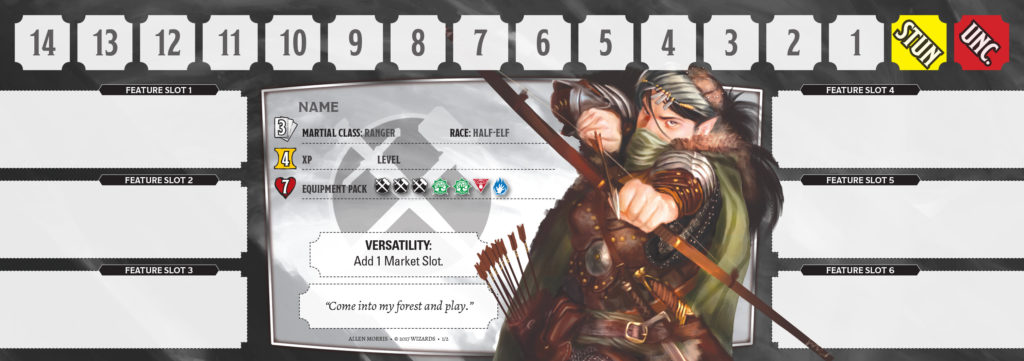
Verdict:
The game has a nice flow. Each scene begins with an uphill battle against multiple encounter cards, presenting a bit of a puzzle while players figure out how best to tackle the many opponents on the table. Characters take damage as they begin to weed out encounters, but they also start to acquire gold, necessary to take out the rest of the baddies or save up for the next scene. With only two draws per turn, new cards are important and the best strategy may be to take out a low level encounter in order to buy a card to help take out the worst one(s).
Most games of this type (ongoing campaign card game where several games are linked) suffer from a slow power progression. Players want to see their character level up and gain more power but game designers want to provide an experience over a longer story arc. While still a bit slow for my taste, Dragonfire is better than most. With set experience gains at the completion of each game (whether successful or not), players can see steady progression. The list of “stickers” that can be used to upgrade a character is large, so players can eyeball new abilities they hope to acquire in the future. Unfortunately, higher level games often grant the same amount of experience as lower level ones, but the cost of the more impressive “sticker” upgrades does not increase linearly. This is slightly mitigated by the option to place a sticker on top of a previous one, and only pay the difference. Early adventures provide a few simple magic items, but near the end of the linked adventure series more powerful ones appear, some with ongoing effects.
Dragonfire does not contain dice (common in a few other legacy card games) so I count that in its favor. Luck comes into play in only a few areas (drawing player/encounter/Dragonfire cards) but once cards are in hand, players can plan out specific plans that are guaranteed to work.
The game is clearly intended for ongoing play. The main campaign of linked adventures is a series of 6 or more games, granting about 30 experience total. The most expensive stickers, valued at 50 exp, could only be gained through at least 10 perfect adventures so players are encouraged to replay earlier adventures modified for higher levels.
Played as a one-off game, Dragonfire is interesting, but not spectacular. The start of each scene is always one of despair and angst while players scramble to find a way to hold off the attacking encounters long enough to start defeating them. The ability to help another player on your turn or on their turn (via assists) keeps players involved and prevents the quarterbacking that may occur in cooperative games. However, Dragonfire is best played with a consistent (or semi-consistent) group of players willing to dedicate themselves to their characters and the story arc. There are plenty of character class/race options and even more with the Heroes of the Sword Coast character pack, so playing through the game with different character options is also a possibility. The Dungeons and Dragons theme is present throughout the game, but can easily be lost while players focus on the mechanics of the game. Traditional role playing gamers are not going to find the story aspects of Dragonfire all that gripping, but board/card gamers looking for a change of pace and willing to commit to an ongoing series of games will be rewarded with a nice cooperative deckbuilder.
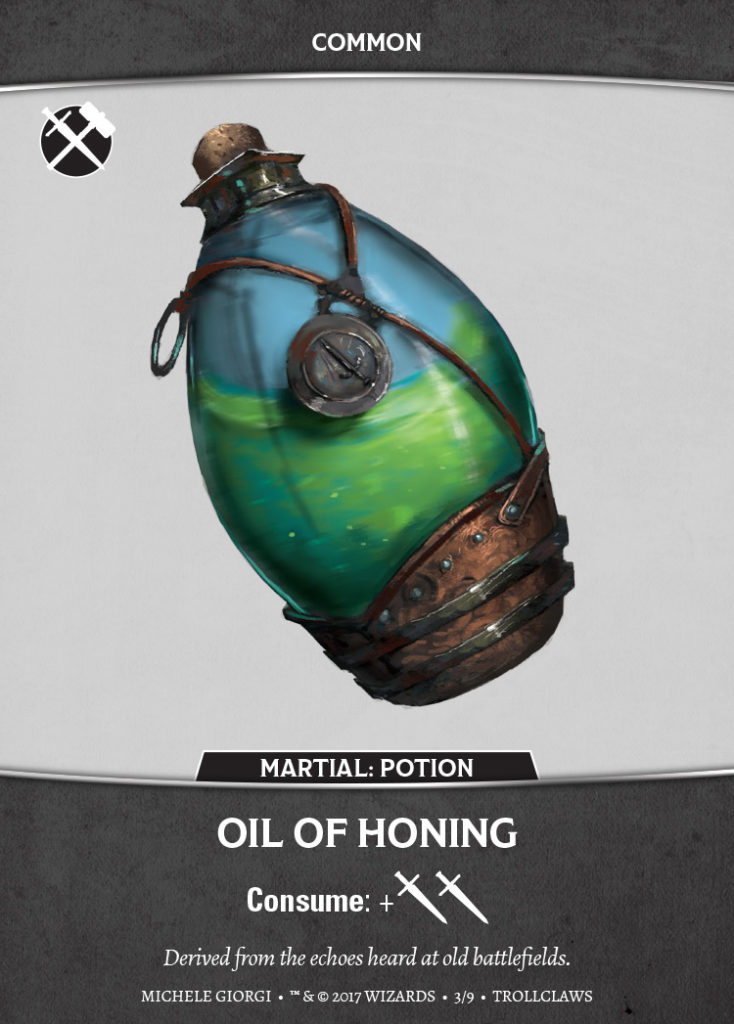
Kid Factor
The art is mostly “tame” in terms of appropriate dress, gore, etc… although some of the art on the encounter cards can be a tad scary. The big issue here is the amount of text. Player’s starting card abilities granting symbols are straightforward but most purchased cards have additional special abilities that require a bit of reading. I would tag the game as one best for late tweens or early teens due to the depth of card interactions and subsequent strategic decisions needed.





Discussion Area - Leave a Comment